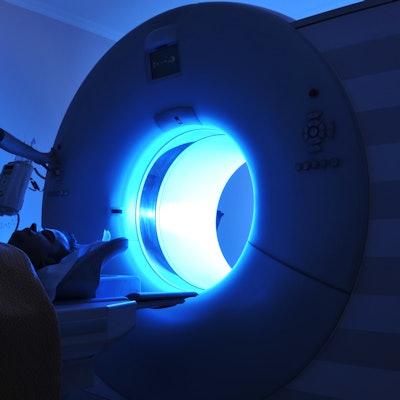
Giving referring physicians feedback on their exam request patterns reduced the number of unnecessary musculoskeletal (MSK) imaging exams ordered by about 10%, according to research from Australia published September 6 in JAMA.
A team of researchers led by Denise O'Connor, PhD, of Monash University in Melbourne assessed four different audit and feedback intervention approaches in a study involving over 3,600 general practitioners. The group found that all forms of interventions led to a significant reduction in order rates in the 12 months following the audit and feedback.
Although the practice of audit and feedback has been shown to improve professional practice, the utility of this approach to reduce MSK imaging is unclear, as prior studies have included only small numbers of practices and general practitioners, according to the authors.
In their study, the researchers sought to assess the effectiveness of a national audit and feedback initiative to reduce requests for 11 MSK diagnostic imaging tests that were commonly overused by high-requesting general practitioners in Australia: lumbosacral spine x-ray and CT; cervical spine x-ray, CT, and MRI; shoulder x-ray and ultrasound; hip x-ray and ultrasound; knee x-ray; and ankle/hindfoot ultrasound. They also wanted to determine which forms of audit and feedback were most effective.
The researchers initially included 3,819 practitioners from 2,271 randomized general practices in Australia. These general practitioners were in the top 20% of referrers overall for these 11 MSK imaging tests and for at least four of the individual imaging exams included in the analysis. Of these, 3,660 general practitioners were included in the final analysis.
Four different types of interventions were tested with different groups of referring physicians, beginning in November 2019. The intervention consisted of audit and feedback and provided a graphic display of the overall request rate for the 11 MSK tests, data on individual test rates per 1,000 consultations, and comparison of referral rates between the general practitioner and their peers in the same geography.
The letters also included text on the benefits of reducing imaging overuse, as well as links to educational resources. It also recommended that general practitioners limit their imaging requests to cases in which imaging was likely to change patient management.
The interventions further varied as follows:
- Audit and feedback with a standard visual display in one mailed letter
- Audit and feedback with the same standard visual display but with an additional mailed letter 12 months later
- Audit and feedback in one letter with a display enhanced to alert general practitioners that their ordering rates for the requested test were greater than 80% of their peers
- The same enhanced display, but via two mailings one year apart
The remaining general practitioners served as the control group and received no interventions.
The interventions yielded a lower mean rate of imaging requests overall.
| Fewer imaging requests in audit and feedback intervention groups | ||
| Control group | Audit and feedback groups | |
| Adjusted mean rate of imaging requests per 1,000 patient consultations over 12 months | 30.4 | 27.7 |
The adjusted mean difference of 2.6 was statistically significant (p < 0.01). The researchers estimated that 47,318 fewer diagnostic imaging tests were requested over the study period due to the audit and feedback interventions.
As for the individual interventions, the researchers found that providing the audit and feedback on two occasions significantly reduced the overall request rate per 1,000 examinations at 18 months following the initial intervention in comparison with only receiving feedback once (25.8 vs. 26.6, p < 0.01). The enhanced display yielded significant improvements at six and 12 months, but not at 18 months, however.
In an accompanying editorial, Dr. Deborah Korenstein and Dr. Erin Gillespie of Memorial Sloan Kettering Cancer Center in New York City noted that the observed 10% reduction in ordering, while modest, could have significant benefit when delivered in areas where low-value care is frequently overused. However, attention should also be paid to patient outcomes, they said.
The generalizability of this approach also needs to be explored beyond a universal health insurance system, particularly regarding financial incentives and the influence of the medical malpractice environment, according to Korenstein and Gillespie.
"Furthermore, although physicians were the target audience in this Australian study, evaluation among nonphysician clinicians, who conduct a significant portion of primary care in the United States, is warranted," they wrote. "Despite these caveats, audit and feedback regarding multiple low-value services delivered to select clinicians has great potential to improve the value proposition and should be pursued."



.fFmgij6Hin.png?auto=compress%2Cformat&fit=crop&h=100&q=70&w=100)





.fFmgij6Hin.png?auto=compress%2Cformat&fit=crop&h=167&q=70&w=250)











